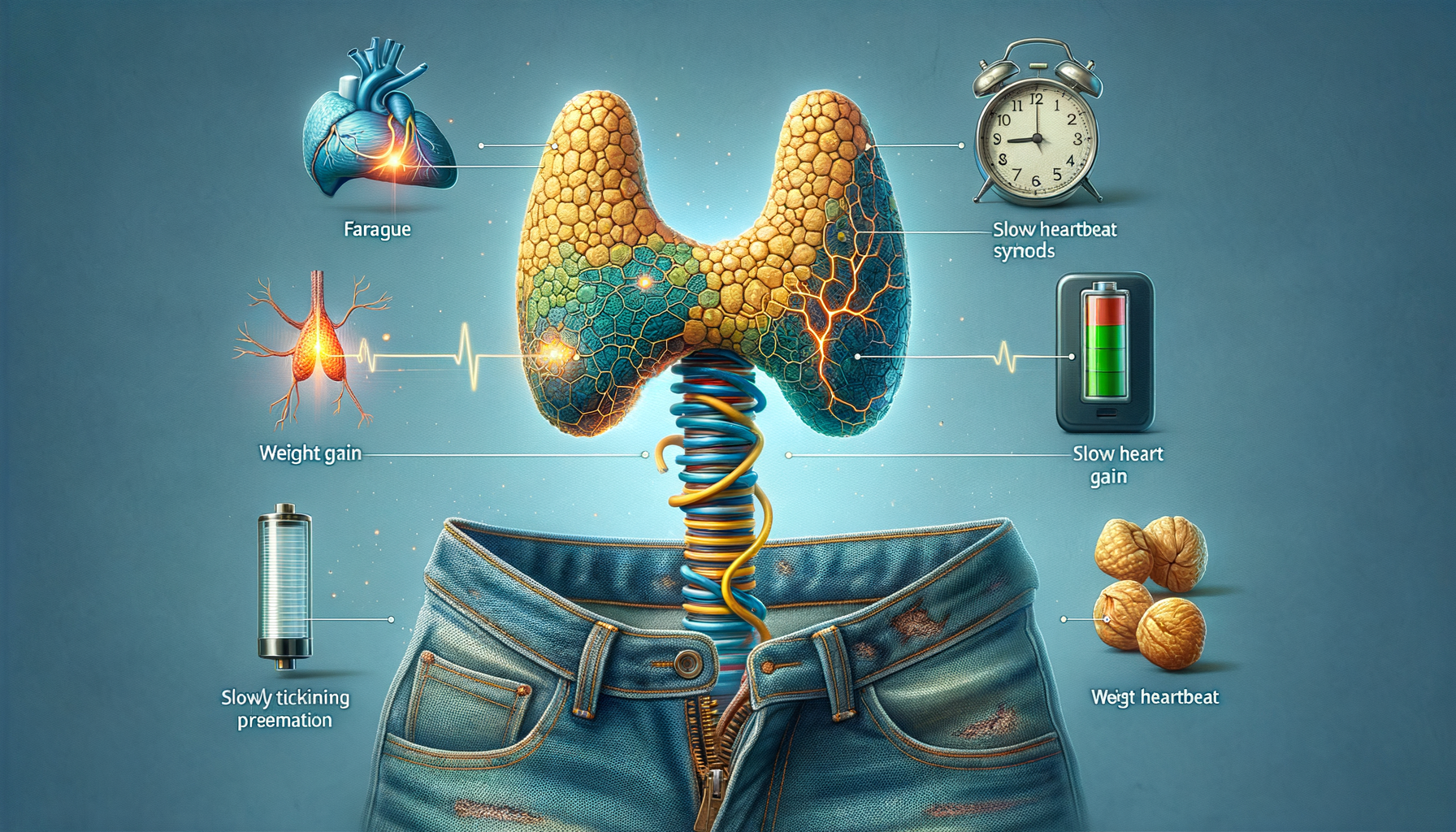Introduction to Underactive Thyroid
An underactive thyroid, medically known as hypothyroidism, is a condition where the thyroid gland doesn’t produce enough hormones. These hormones are crucial for regulating metabolism, energy generation, and the overall balance of the body’s systems. Understanding the symptoms of an underactive thyroid is vital because early detection can lead to more effective management and treatment. This article will explore the various signs and symptoms associated with this condition, providing insights that may help individuals recognize potential thyroid issues.
Common Symptoms of Hypothyroidism
Hypothyroidism can manifest through a variety of symptoms, which can often be subtle and develop slowly over time. Some of the more common symptoms include:
- Fatigue and sluggishness
- Increased sensitivity to cold
- Weight gain without a clear reason
- Depression or mood swings
- Muscle weakness and joint pain
These symptoms occur because the thyroid hormones play a significant role in energy metabolism. When hormone levels are low, the body’s processes slow down, leading to the above-mentioned symptoms. It’s important to note that not everyone with hypothyroidism will experience all these symptoms, and their severity can vary from person to person.
Impact on Mental and Emotional Health
The thyroid gland significantly influences mental and emotional well-being. Hypothyroidism can lead to feelings of depression, anxiety, and general mood swings. This occurs because thyroid hormones affect neurotransmitter levels in the brain, which are crucial for mood regulation. Individuals may notice a lack of motivation, increased irritability, or even memory problems. Recognizing these symptoms as potential signs of an underactive thyroid can be crucial for seeking timely medical advice and improving one’s quality of life.
Physical Changes and Skin Conditions
Physical changes are common among those with hypothyroidism. The skin may become dry and pale, and hair may become coarse and thin. These changes occur because of the reduced metabolic rate, which affects the body’s ability to regenerate cells efficiently. Additionally, some individuals may experience swelling in the face or extremities, known as myxedema, which is a more severe manifestation of the condition. Monitoring these physical signs can help in the early detection and management of an underactive thyroid.
Seeking Medical Advice and Diagnosis
If you suspect you have symptoms of an underactive thyroid, it is crucial to consult with a healthcare professional. Diagnosis typically involves a series of blood tests to measure levels of thyroid-stimulating hormone (TSH) and thyroxine (T4). A higher than normal TSH level and a lower than normal T4 level usually indicate hypothyroidism. Early diagnosis and treatment can significantly improve symptoms and prevent complications. Treatment often involves hormone replacement therapy, which can help restore normal hormone levels and alleviate symptoms.




Leave a Reply